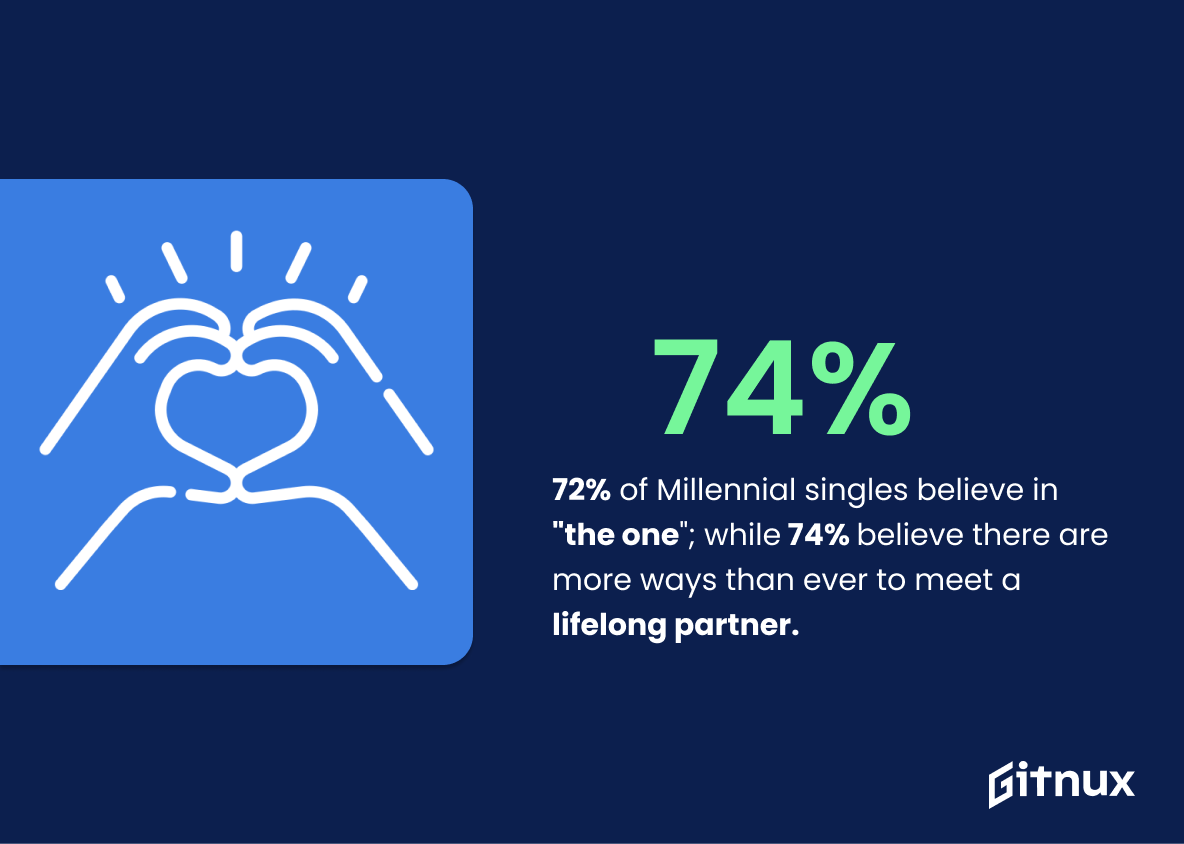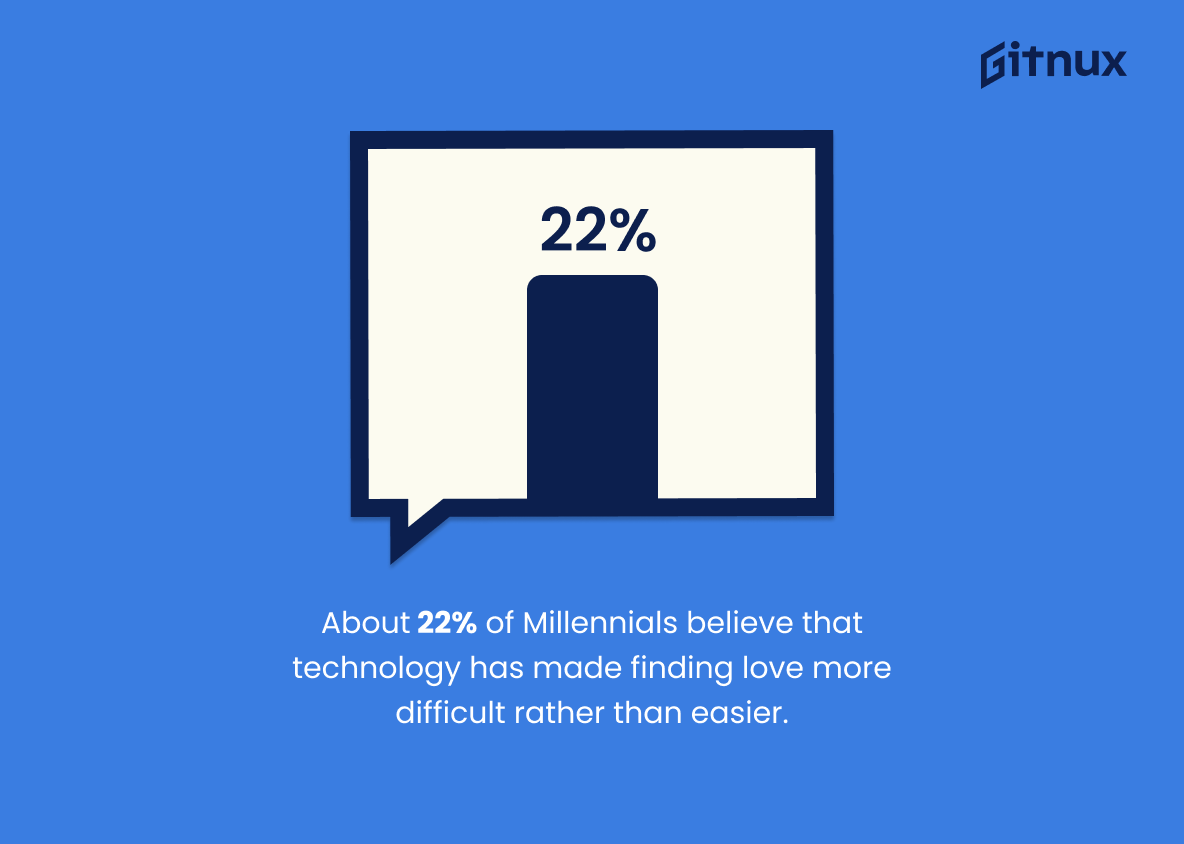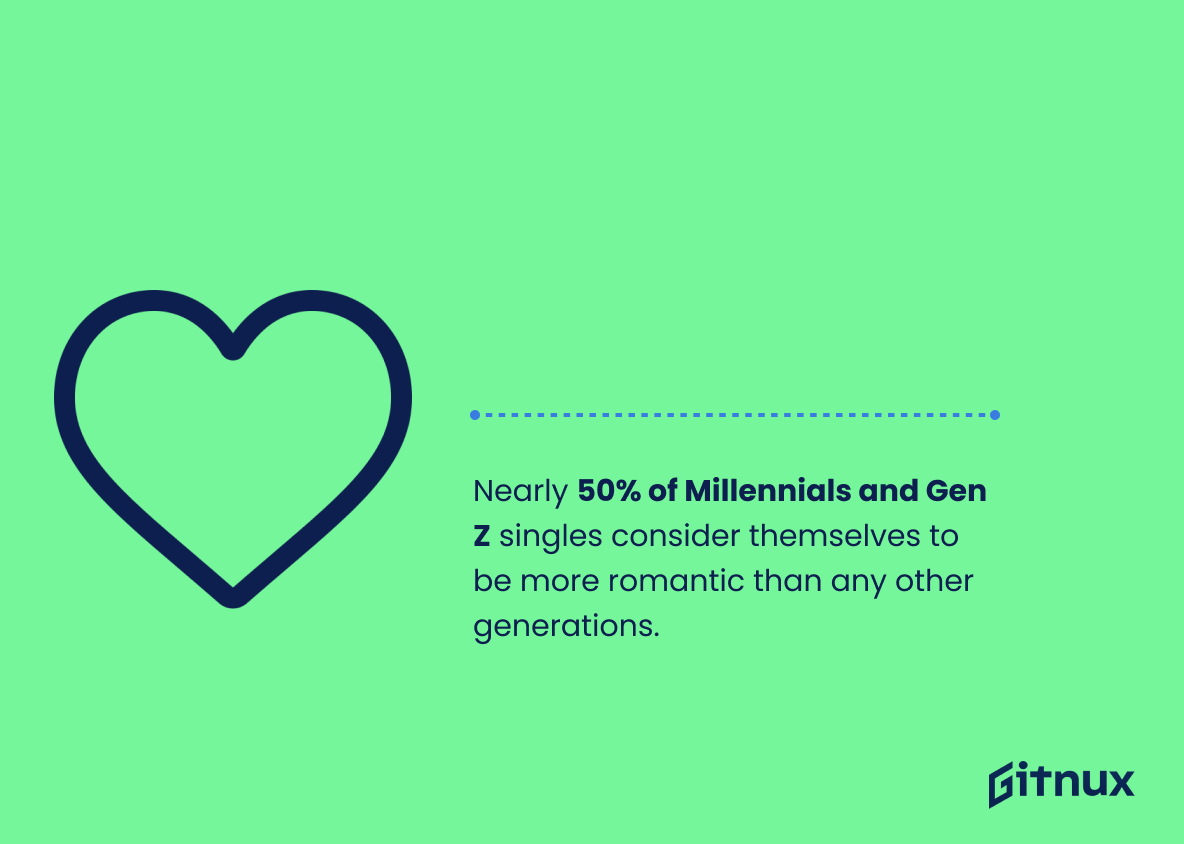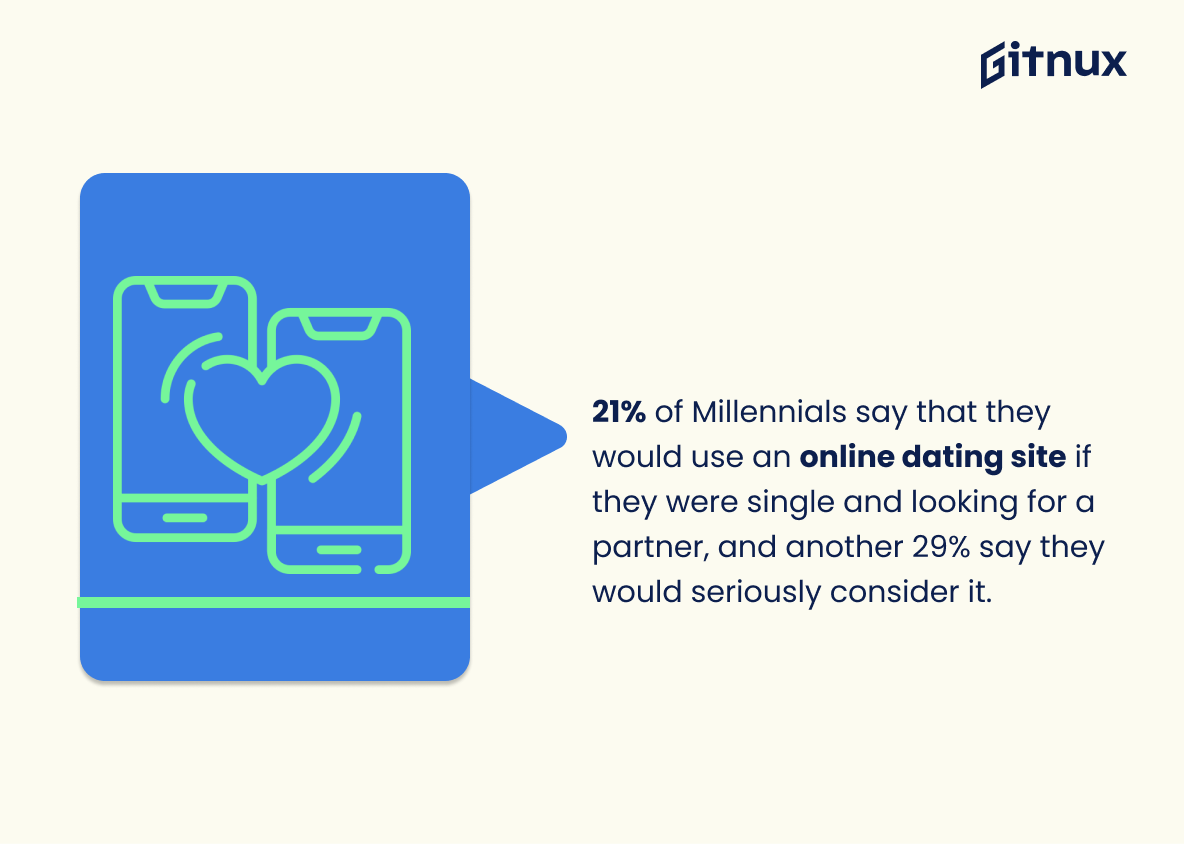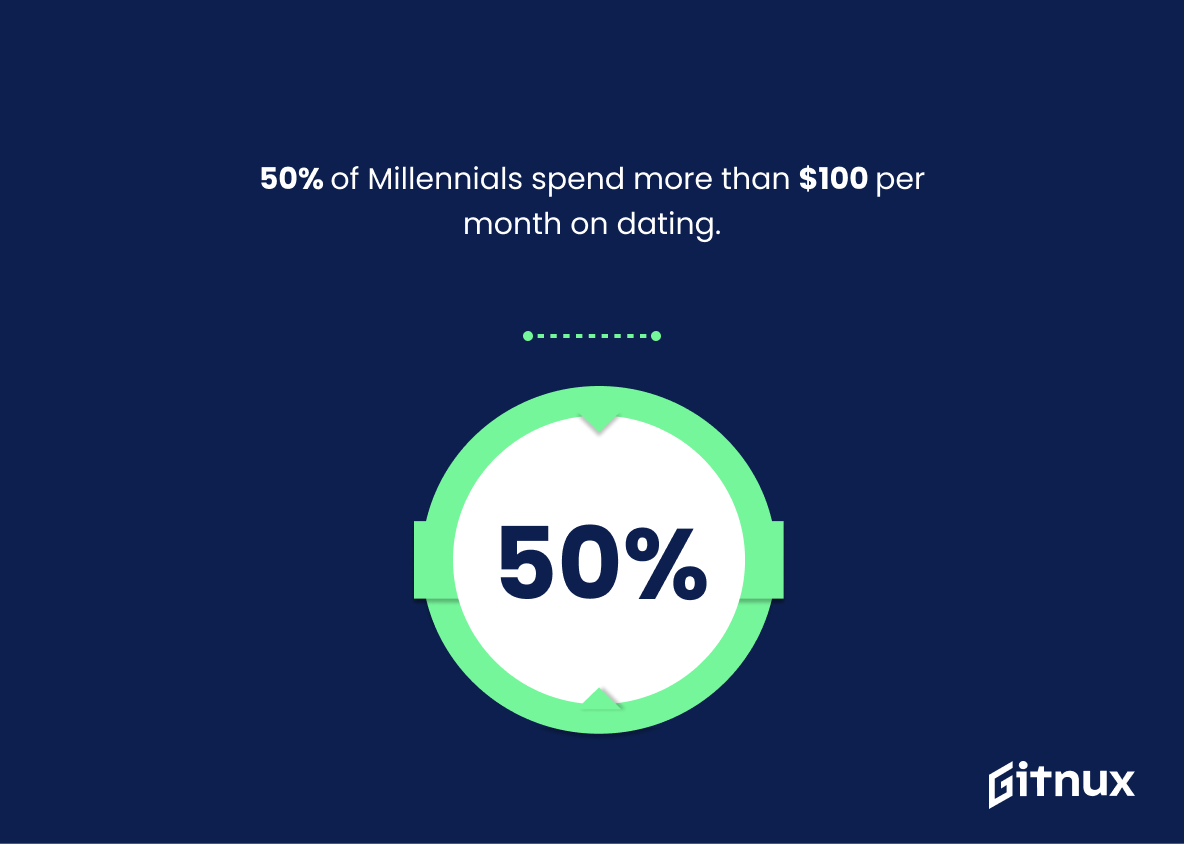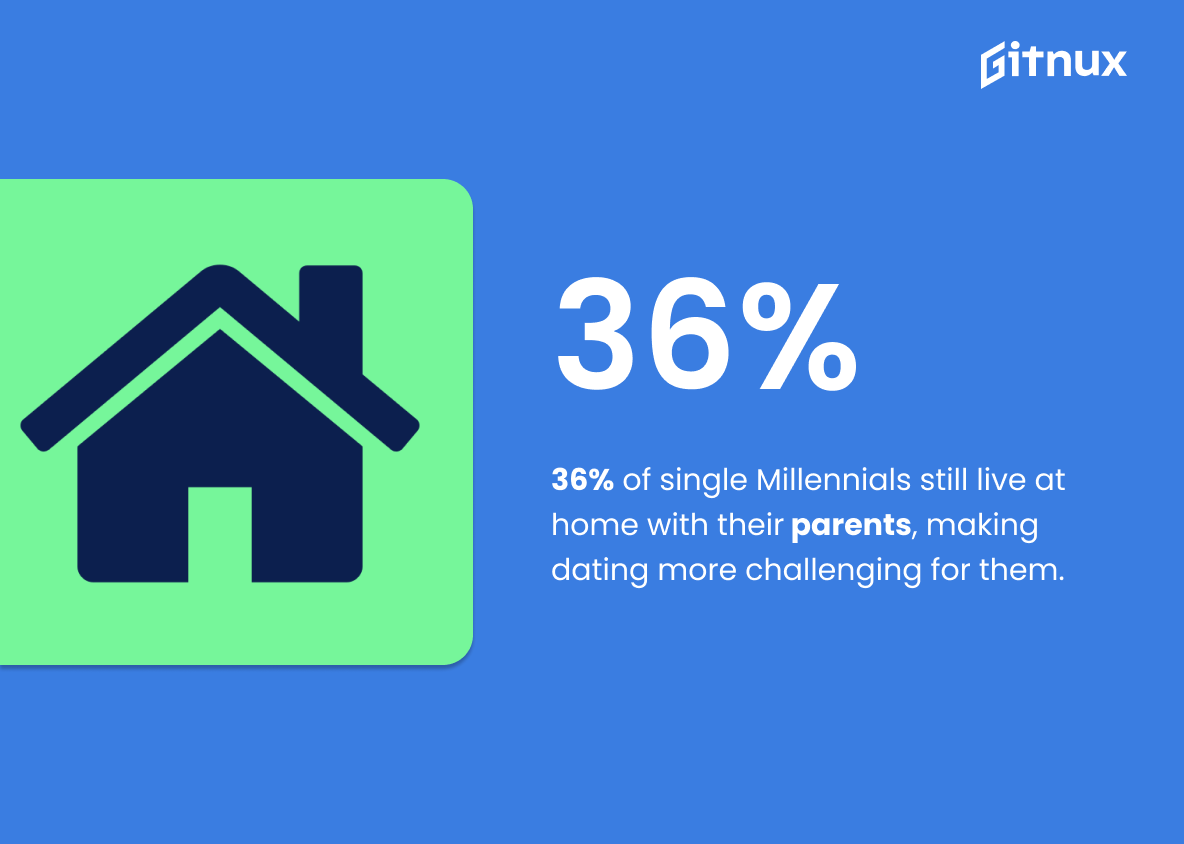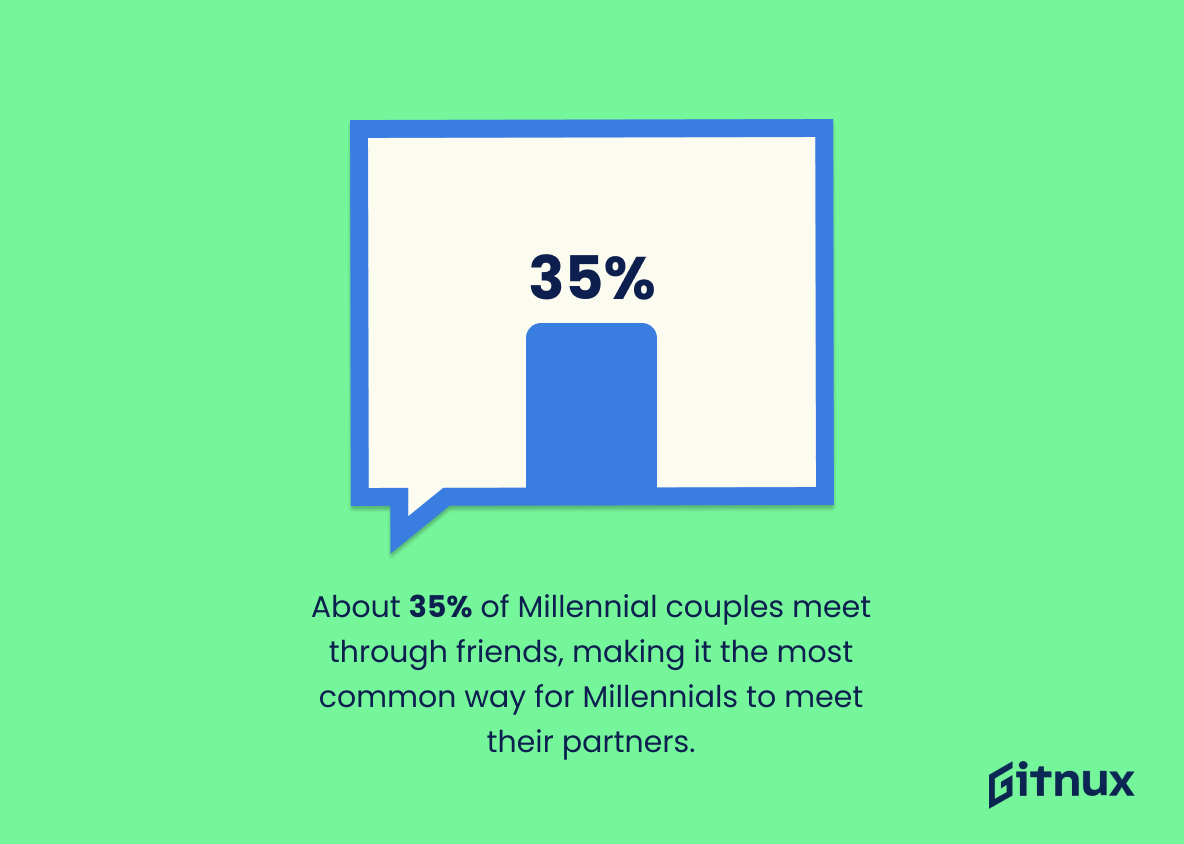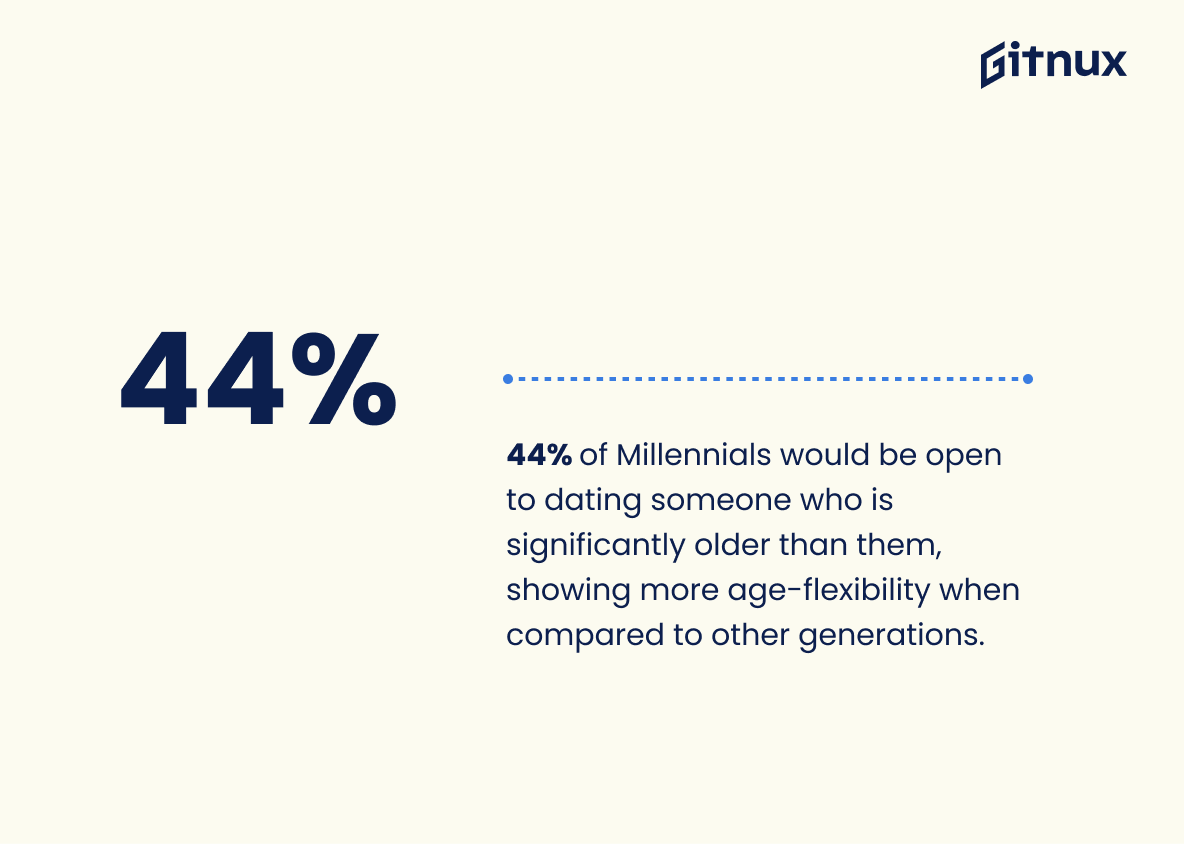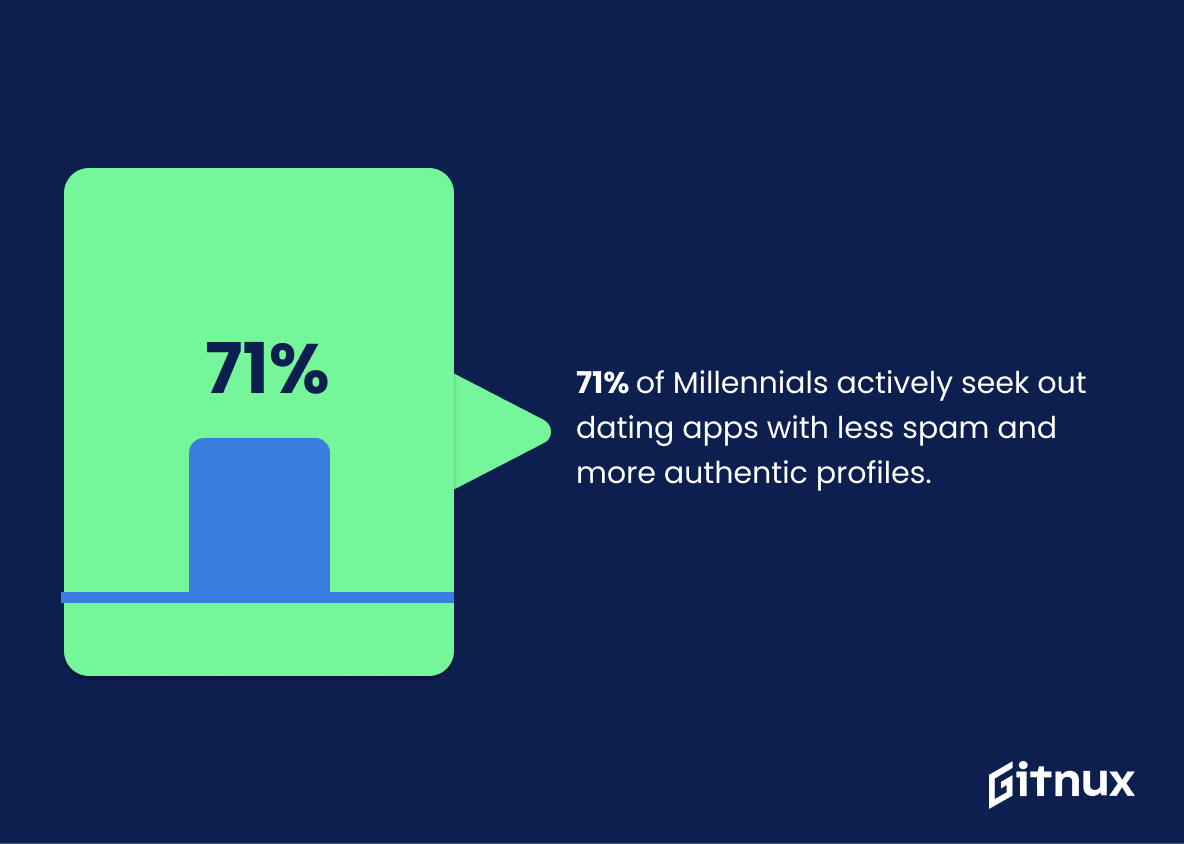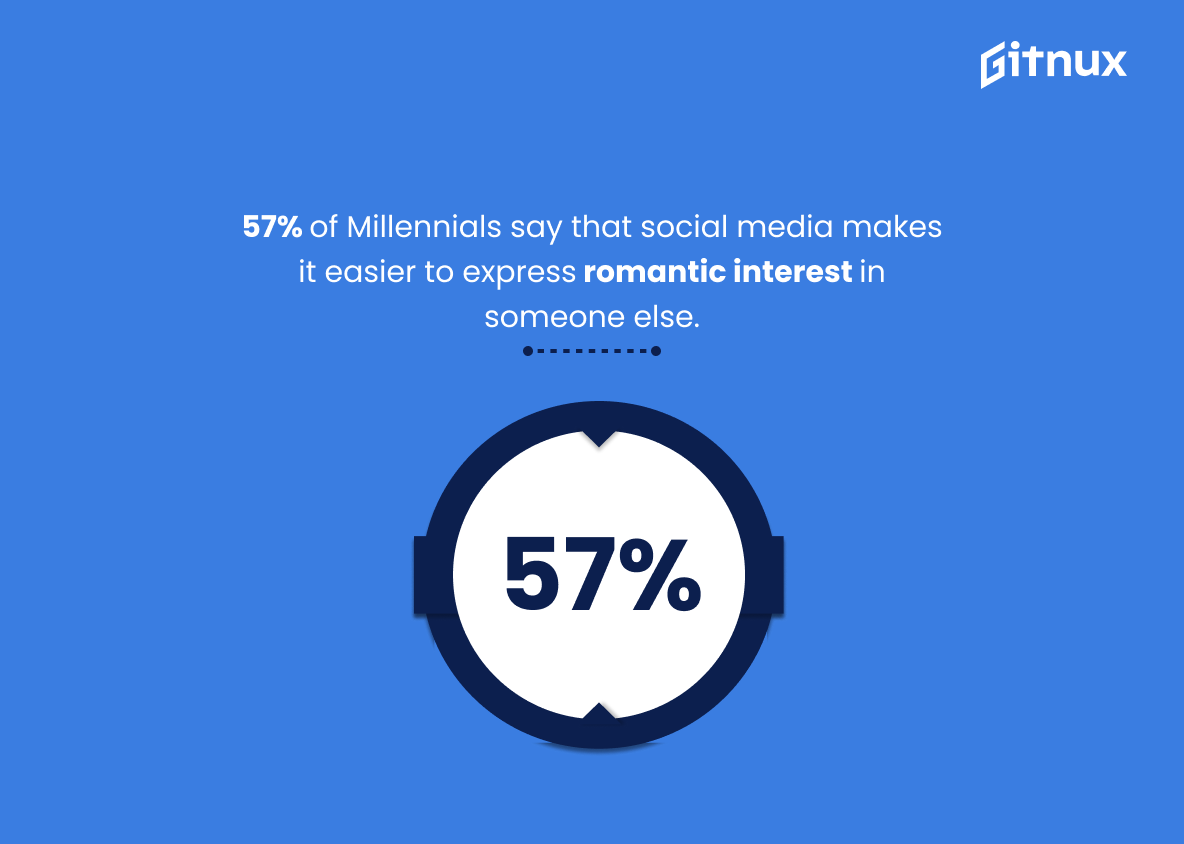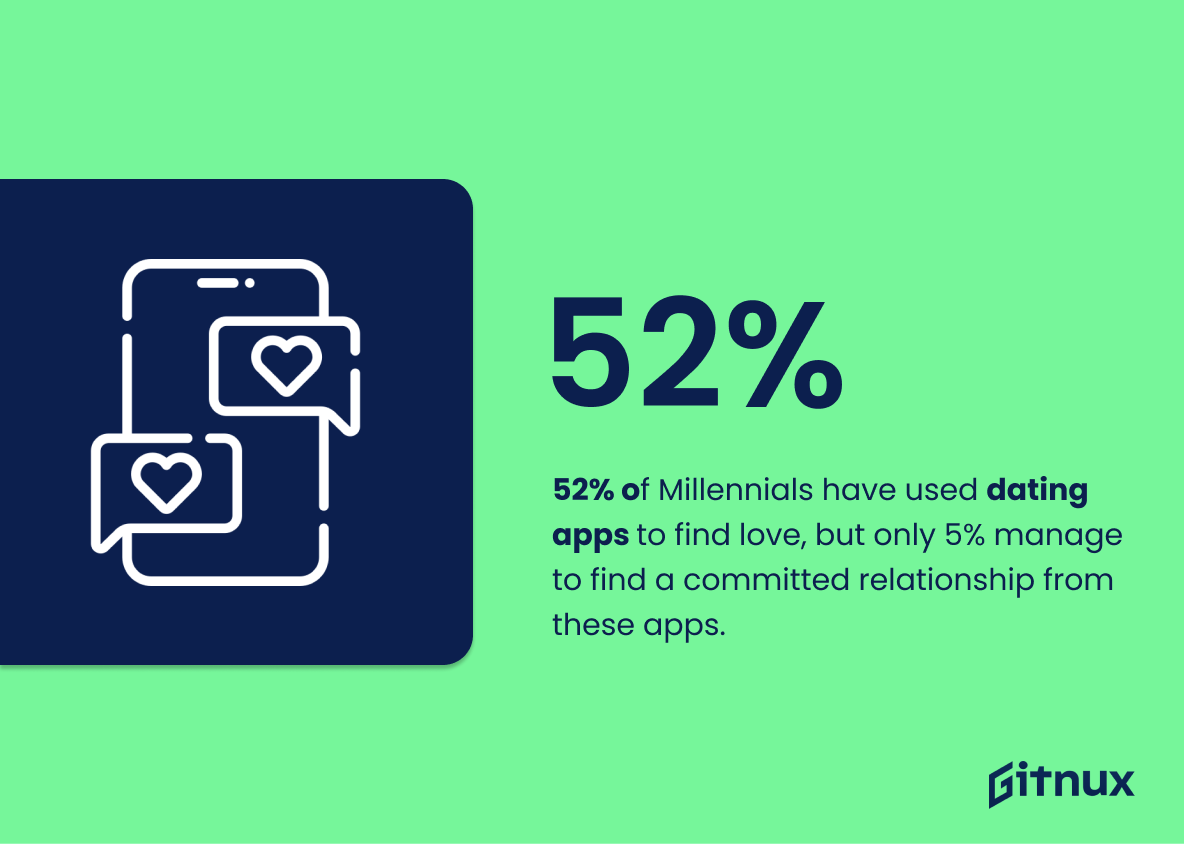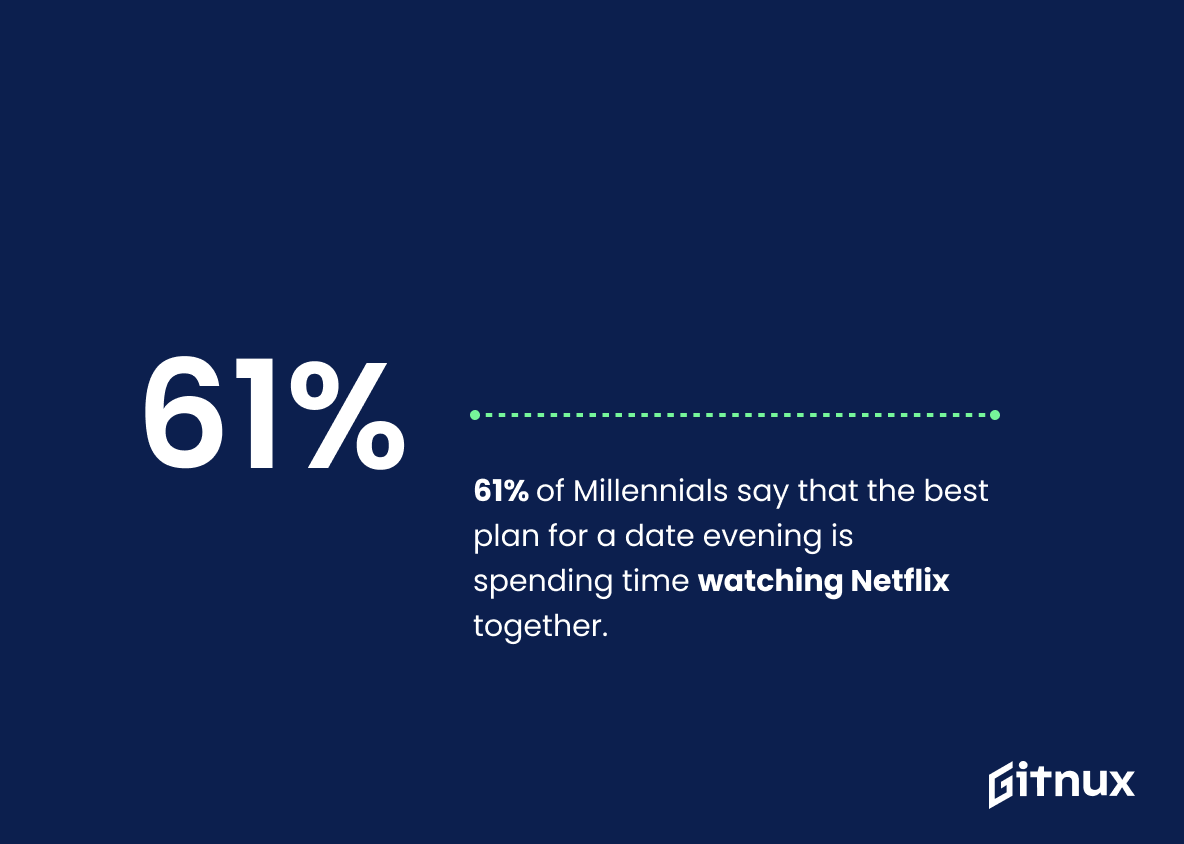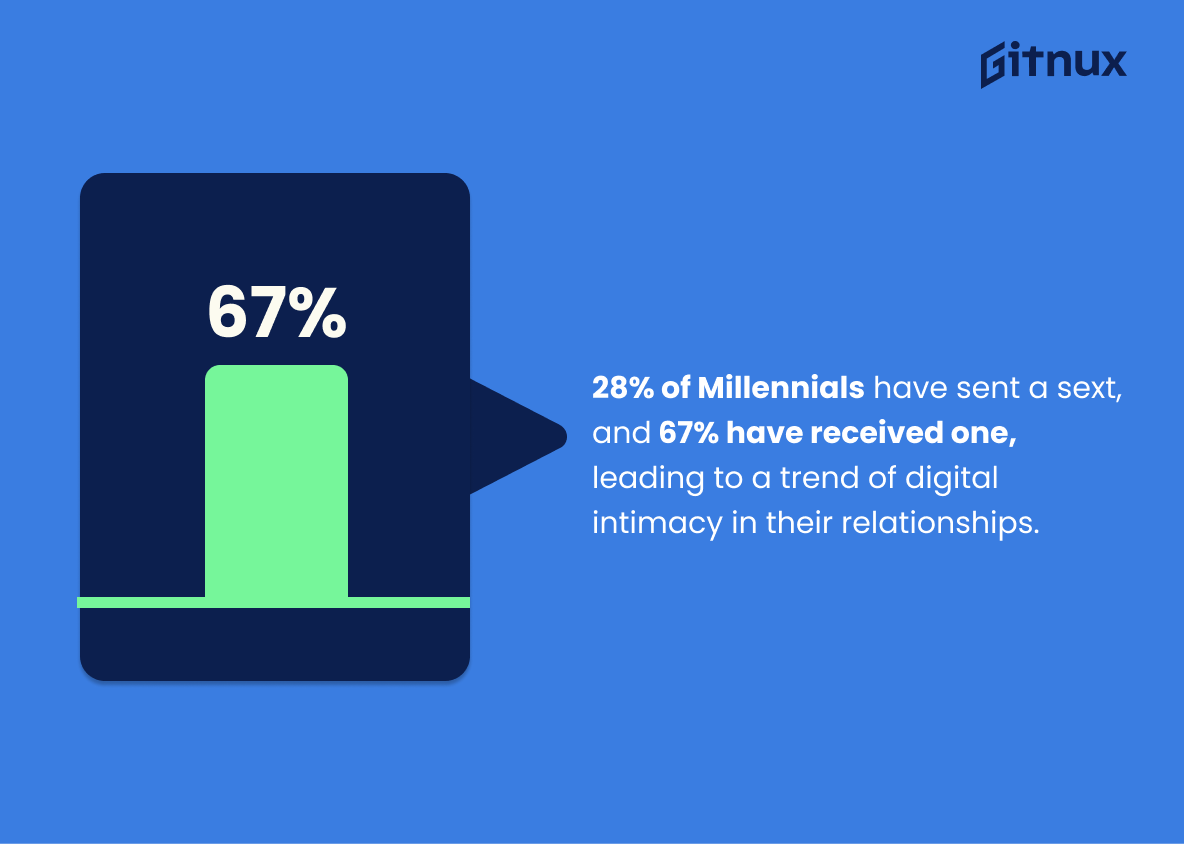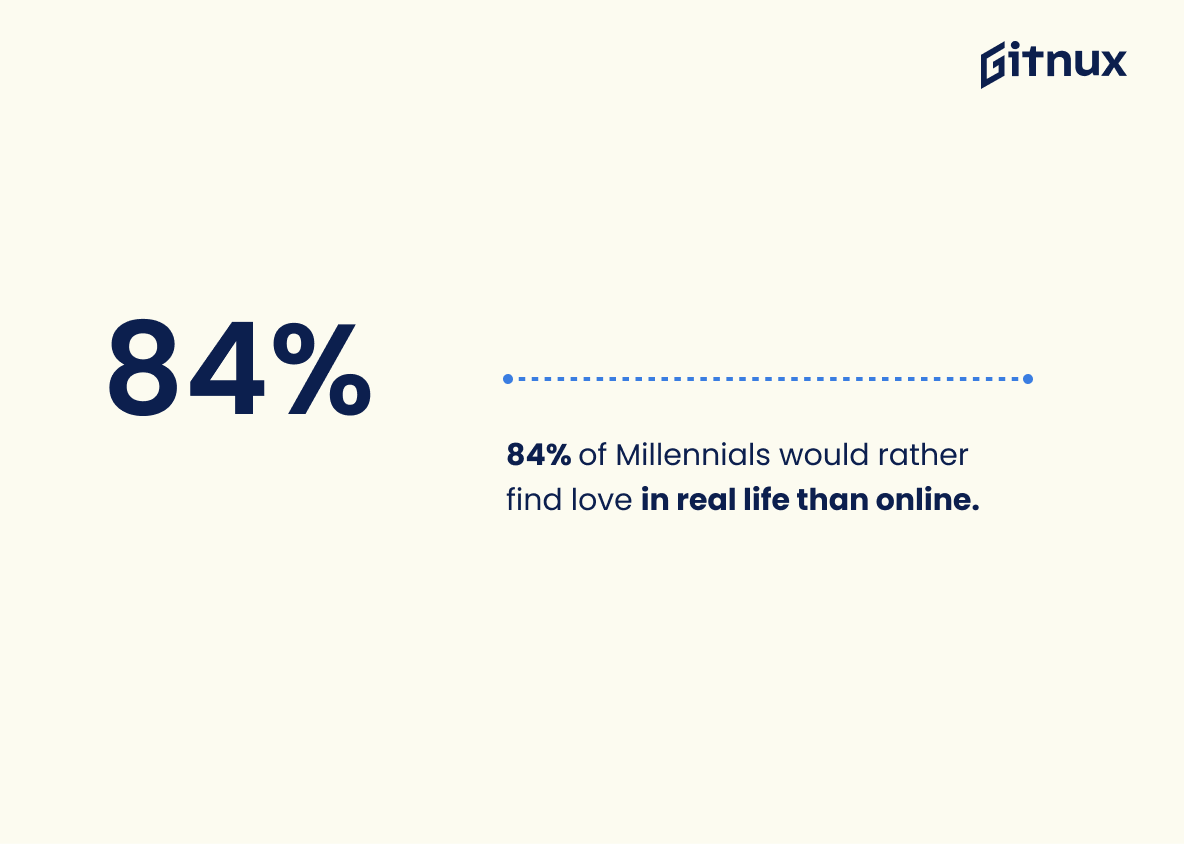Millennials are the largest generation in history, and they have changed the way we think about dating. From using technology to find love to having more open-minded views on relationships, Millennials have certainly made their mark when it comes to romance. In this blog post, we will explore some of the most interesting Millennial Dating Statistics that show how this generation is approaching modern day relationships. We’ll look at statistics such as how many Millennials believe in “the one”, what percentage use online dating sites or apps for finding a partner, and even which activities they prefer for date night. So let’s dive into these fascinating stats and see what insights can be gleaned from them.
This statistic is a telling indication of the Millennial mindset when it comes to dating. It shows that, while they may be open to new ways of meeting potential partners, they still believe in the concept of ‘the one’. This speaks to the optimism and hope that Millennials have when it comes to finding love, despite the challenges they may face in the modern dating world.
About 22% of Millennials believe that technology has made finding love more difficult rather than easier.
This statistic is a telling indication of the impact technology has had on the Millennial generation’s approach to dating. It suggests that, despite the convenience and accessibility of online dating, many Millennials still find it difficult to find love through technology. This statistic is a reminder that, while technology can be a useful tool for finding love, it can also be a hindrance if not used properly.
Millennial Dating Statistics Overview
Nearly 50% of Millennials and Gen Z singles consider themselves to be more romantic than any other generations.
This statistic is a telling indication of the changing attitudes of Millennials and Gen Z singles towards romance. It suggests that the younger generations are more open to expressing their feelings and engaging in romantic activities than their predecessors. This could be a reflection of the increased access to technology and social media, which has made it easier for people to connect and express themselves. As such, this statistic is an important insight into the changing dynamics of Millennial and Gen Z dating.
21% of Millennials say that they would use an online dating site if they were single and looking for a partner, and another 29% say they would seriously consider it.
This statistic is significant in the context of Millennial Dating Statistics because it reveals that a majority of Millennials are open to the idea of using online dating sites to find a partner. This indicates that online dating is becoming increasingly popular among Millennials, and that it is becoming a more accepted way of meeting potential partners. This statistic is important to consider when discussing the changing landscape of Millennial dating.
50% of Millennials spend more than $100 per month on dating.
This statistic is a telling indication of the importance Millennials place on dating. It shows that they are willing to invest a significant amount of money into their relationships, suggesting that they value them highly. This statistic is also important in understanding the spending habits of Millennials, which can be useful for businesses looking to target this demographic.
36% of single Millennials still live at home with their parents, making dating more challenging for them.
This statistic is a telling indication of the difficulties Millennials face when it comes to dating. With such a large portion of single Millennials living at home with their parents, it can be difficult for them to find the time and space to pursue relationships. This can be especially true for those who are living in more traditional households, where dating is not always encouraged or accepted. As such, this statistic serves as a reminder of the unique challenges Millennials face when it comes to dating.
About 35% of Millennial couples meet through friends, making it the most common way for Millennials to meet their partners.
This statistic is significant in the context of Millennial Dating Statistics as it highlights the importance of social networks in the dating lives of Millennials. It shows that friends play a major role in helping Millennials find their partners, suggesting that the traditional methods of meeting someone are not as popular among this generation. This statistic is a reminder that Millennials are more likely to rely on their social circles to find potential partners, rather than relying on more traditional methods.
44% of Millennials would be open to dating someone who is significantly older than them, showing more age-flexibility when compared to other generations.
This statistic is a telling indication of the changing attitudes of Millennials when it comes to dating. It shows that Millennials are more open to the idea of dating someone significantly older than them, which is a stark contrast to the attitudes of other generations. This statistic is important to consider when discussing Millennial dating trends, as it provides insight into the evolving views of Millennials on age and relationships.
71% of Millennials actively seek out dating apps with less spam and more authentic profiles.
This statistic is a telling indication of the Millennial generation’s desire for more meaningful connections. It speaks to the fact that Millennials are looking for more than just a casual fling; they are looking for genuine connections with people who share similar interests and values. This statistic is a reflection of the Millennial generation’s commitment to finding meaningful relationships, and it is an important factor to consider when discussing Millennial dating statistics.
57% of Millennials say that social media makes it easier to express romantic interest in someone else.
This statistic is a telling indication of the changing landscape of Millennial dating. It speaks to the fact that Millennials are increasingly turning to social media as a platform to express their romantic interest in someone else. This shift in behavior has implications for the way Millennials interact with potential partners, and how they go about finding love.
52% of Millennials have used dating apps to find love, but only 5% manage to find a committed relationship from these apps.
This statistic is a telling indication of the difficulty Millennials face when it comes to finding committed relationships through dating apps. It highlights the fact that, while many Millennials are turning to these apps to find love, the majority are not having much success in their search. This statistic is an important reminder that, while technology can be a useful tool in the search for love, it is not a guarantee of success.
Millennials are 270% more likely than other generations to be turned off if a potential partner talks too much about themselves.
This statistic is a powerful reminder of the importance of self-awareness when it comes to Millennial dating. It highlights the need for potential partners to be mindful of how much they talk about themselves, as Millennials are far more likely to be turned off by someone who talks too much about themselves. This statistic is a valuable insight into the preferences of Millennials when it comes to dating, and can help guide conversations in a more balanced and respectful direction.
61% of Millennials say that the best plan for a date evening is spending time watching Netflix together.
This statistic is a telling indication of the changing landscape of Millennial dating. It suggests that Millennials are increasingly prioritizing comfort and convenience over traditional date night activities. This could be a reflection of the busy lifestyles that many Millennials lead, or it could be a sign of a larger shift in the way Millennials view dating. Either way, this statistic is an important piece of the puzzle when it comes to understanding Millennial dating trends.
28% of Millennials have sent a sext, and 67% have received one, leading to a trend of digital intimacy in their relationships.
This statistic speaks volumes about the changing landscape of Millennial relationships. It reveals that digital intimacy is becoming increasingly commonplace, with a majority of Millennials having received a sext and nearly a third having sent one. This indicates that Millennials are embracing technology as a way to express their feelings and desires, and that digital communication is becoming an integral part of their relationships.
About 29% of Millennials think that most people who use online dating sites are dishonest.
This statistic is a telling indication of the attitudes that Millennials have towards online dating. It suggests that a significant portion of Millennials view online dating as a dishonest activity, which could have a major impact on the way they approach it. This could lead to Millennials being more cautious when it comes to online dating, or even avoiding it altogether. As such, this statistic is an important factor to consider when discussing Millennial dating statistics.
84% of Millennials would rather find love in real life than online.
This statistic is a powerful reminder that, despite the prevalence of online dating, Millennials still value the traditional approach of finding love in real life. It speaks to the importance of face-to-face interaction and the power of human connection. This statistic is a testament to the fact that Millennials still believe in the power of love and are willing to take the risk of putting themselves out there in order to find it.
40% of Millennials prefer to meet potential relationship partners through friends, family, or colleagues.
This statistic is significant in the context of Millennial Dating Statistics because it reveals the importance of social networks in the dating lives of Millennials. It suggests that Millennials are more likely to rely on their social circles to find potential partners, rather than relying solely on online dating or other methods. This highlights the importance of social connections in the Millennial dating experience, and could be used to inform strategies for connecting with potential partners.
Conclusion
From the statistics presented, it is clear that Millennials have a unique approach to dating. They are more likely than other generations to admit they are addicted to making love connections and believe in “the one”. However, technology has made finding love more difficult for some of them. Despite this challenge, many still find ways to meet potential partners through friends or family members as well as online dating sites. Additionally, Millennial couples tend to be more open-minded when it comes age differences and prefer activities such as watching Netflix together over traditional dates like dinner and drinks. Finally, digital intimacy appears common among Millennials with sexting being popular amongst those who use online dating apps but also distrustful of others on these platforms due their perception of dishonesty from users.
References
0. – https://www.files.eric.ed.gov
1. – https://www.pewresearch.org
2. – https://www.psyclelondon.com
3. – https://www.statista.com
4. – https://www.zoosk.com
5. – https://www.money.co.uk
6. – https://www.plentyoffish.com
7. – https://www.theblog.okcupid.com
8. – https://www.nexum.eu
9. – https://www.comparitech.com
10. – https://www.pewsocialtrends.org
11. – https://www.elitesingles.com
12. – https://www.splinternews.com
13. – https://www.singlesinamerica.com
14. – https://www.vouchercodespro.co.uk
